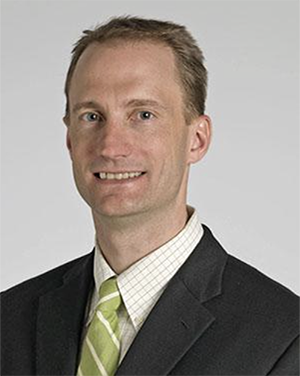The aim of my research is to understand structure-function relationships within the central nervous system and the upper extremity.
Our goal is to understand the complex interactions involved in the systems-level neural organization and control of bladder and urethral function. We use this information to develop neural prostheses or rehabilitative techniques that interface with the nervous system and restore genito-urinary function at the earliest opportunity.
My research focuses on determining how grasping forces and torques are controlled and coordinated during functional dexterous manipulations. Investigation of movement patterns produced by different patient groups and healthy adults provides a window into the brain with respect to the control of voluntary movement.
We work with Parkinson’s disease (PD) patients to determine the role of the basal ganglia in movement control. Recently, we have shown that unilateral deep brain stimulation provides long-term bilateral motor benefits. We are also comparing the effects of assisted vs. voluntary exercise on PD motor function.
These studies suggest that central motor control processing may be improved by “assisted exercise” (e.g., a patient’s “passive” leg movements being generated by the pedaling of a healthy partnering cyclist on a tandem bicycle). Studies comparing motor performance in old vs. young adults reveal the effects of normal aging on motor function. We have shown that older adults have specific impairments in the release of grasping forces, which may contribute to diminished hand function. Overall, these data provide insight into mechanisms underlying upper-extremity motor function. These investigations have the potential to improve clinical practice through better methods of motor assessment.
The objective, quantitative assessment of motor function will aid in disease diagnostic capability and specificity, slowing of disease progression and intervention efficacy for patients in which movement is compromised.
Research Programs
- Deep Brain Stimulation and Motor Function in Parkinson’s Patients
Publications (Select)
Entire publication list can be found here.
- Alberts JL, Modic MT, Udeh B, Dey T, Cherian K, Lu X, Figler R, Russman A, Linder SM. Development and Implementation of a Multi-Disciplinary Technology Enhanced Care Pathway for Youth and Adults with Concussion. J Vis Exp. 2019 Jan 20;(143). doi: 10.3791/58962PMID: 30735197
- Rosenfeldt AB, Linder SM, Davidson S, Clark C, Zimmerman NM, Lee JJ, Alberts JL. Combined Aerobic Exercise and Task Practice Improve Health-Related Quality of Life Poststroke: A Preliminary Analysis. Arch Phys Med Rehabil. 2018 Dec 10. pii: S0003-9993(18)31517-X. doi: 0.1016/j.apmr.2018.11.011 PMID: 30543801
- Wojcik CM, Rao SM, Schembri AJ, Drake AS, Maruff P, Schindler D, Alberts J, Yasin F, Pol J, Weinstock-Guttman B, Benedict RH. Necessity of technicians for computerized neuropsychological assessment devices in multiple sclerosis. Mult Scler. 2018 Nov 22:1352458518813287. doi: 10.1177/1352458518813287 PMID: 30465463
- Miller Koop M, Ozinga SJ, Rosenfeldt AB, Alberts JL. Quantifying turning behavior and gait in Parkinson’s disease using mobile technology. IBRO Rep. 2018 Jun 21;5:10-16. doi: 10.1016/j.ibror.2018.06.002. eCollection 2018 Dec. DOI: 10.1016/j.ibror.2018.06.002 PMID: 30135951
- Ozinga SJ, Linder SM, Koop MM, Dey T, Figler R, Russman AN, So R, Rosenthal AH, Cruickshank J, Alberts JL. Normative Performance on the Balance Error Scoring System by Youth, High School, and Collegiate Athletes. J Athl Train. 2018 Jul;53(7):636-645. doi: 10.4085/1062-6050-129-17. Epub 2018 Aug 15. doi: 10.4085/1062-6050-129-17 PMID: 30109948
- Linder SM, Ozinga SJ, Koop MM, Dey T, Figler R, Cruickshank J, Alberts JL. Cleveland Clinic-Postural Stability Index Norms for the Balance Error Scoring System. Med Sci Sports Exerc. 2018 May 3; doi: 10.1249/MSS.0000000000001660 Pubmed PMID: 29794620
- Penko AL, Streicher MC, Koop MM, Dey T, Rosenfeldt AB, Bazyk AS, Alberts JL. Dual-task Interference Disrupts Parkinson’s Gait Across Multiple Cognitive Domains. Neuroscience. 2018 May 21;379:375–382. doi: 10.1016/j.neuroscience.2018.03.021 Pubmed PMID: 29577998
- Linder SM, Rosenfeldt AB, Bazyk AS, Koop MM, Ozinga S, Alberts JL. Improved lower extremity pedaling mechanics in individuals with stroke under maximal workloads. Top Stroke Rehabil. 2018 May;25(4):248–255. doi: 10.1080/10749357.2018.1437935 Pubmed PMID: 29447080
- Baron EI, Miller Koop M, Streicher MC, Rosenfeldt AB, Alberts JL. Altered kinematics of arm swing in Parkinson’s disease patients indicates declines in gait under dual-task conditions. Parkinsonism Relat Disord. 2018 Mar;48:61–67. doi: 10.1016/j.parkreldis.2017.12.017 Pubmed PMID: 29276008
- Nock NL, Minnes S, Alberts JL. Neurobiology of substance use in adolescents and potential therapeutic effects of exercise for prevention and treatment of substance use disorders. Birth Defects Res. 2017 Dec 1;109(20):1711–1729. doi: 10.1002/bdr2.1182 Pubmed PMID: 29251846
- Van der Kolk NM, de Vries NM, Penko AL, van der Vlugt M, Mulder AA, Post B, Alberts JL, Bloem BR. A remotely supervised home-based aerobic exercise programme is feasible for patients with Parkinson’s disease: results of a small randomised feasibility trial. J Neurol Neurosurg Psychiatry. 2018 Sep;89(9):1003-1005. doi: 10.1136/jnnp-2017-315728 PMID: 28607121
- Ozinga SJ, Koop MM, Linder SM, Machado AG, Dey T, Alberts JL. Three-dimensional evaluation of postural stability in Parkinson’s disease with mobile technology. J Neurol Neurosurg Psychiatry. 2018 Sep;89(9):1003-1005. doi: 10.3233/NRE-171473 pmid: 28527232

